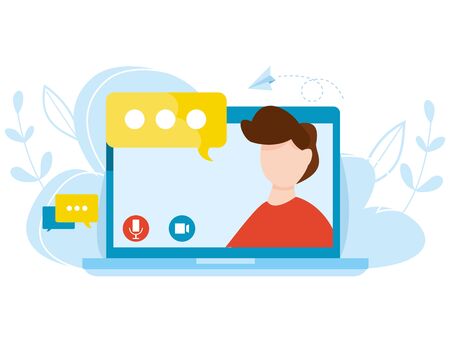1. Understanding the Group Interview Format
Group interviews are a popular hiring method in the United States, especially for roles that require teamwork, communication, and leadership skills. In a group interview, several candidates are interviewed together by one or more interviewers. This format allows employers to observe how you interact with others, manage stress, and contribute to a team environment.
What Employers Are Looking For
During a group interview, employers are not just interested in your qualifications or experience—they want to see how you behave in real-time situations. Here’s what they often focus on:
| Key Skills | Why They Matter |
|---|---|
| Communication | Clear and respectful communication helps ensure everyone is heard and ideas are shared effectively. |
| Teamwork | Collaboration is vital in most U.S. workplaces; being able to work well with others is a major plus. |
| Leadership | Taking initiative while respecting others shows potential for growth and management roles. |
| Active Listening | Pays attention to others’ ideas before responding—this is highly valued in American work culture. |
| Problem Solving | Group activities may test your ability to think critically and offer solutions under pressure. |
Common Group Interview Scenarios
You might encounter different types of group interviews depending on the company and position. Here are some typical scenarios:
- Panel Discussion: Several candidates discuss a topic or solve a problem together while interviewers observe.
- Role Play: Candidates act out workplace situations to demonstrate interpersonal or sales skills.
- Case Study: The group is given a business challenge to solve collaboratively, then present their solution.
- Q&A Session: Interviewers ask questions to the group, sometimes expecting candidates to build off each other’s answers.
The U.S. Cultural Context
In the U.S., standing out without overpowering others is important. Employers appreciate candidates who can express their ideas clearly but also encourage input from teammates. Remember, your goal is not only to showcase your strengths but also to show you can help others shine—something highly valued in American teams.
2. Strategies for Speaking Up with Confidence
Understanding American Communication Styles
In the U.S., sharing your thoughts in a group is encouraged, but it’s important to do so respectfully. Americans value confidence, clarity, and teamwork during group interviews. Here’s how you can assert yourself without coming across as rude or dismissive.
Ways to Assert Yourself Effectively
| Technique | How to Apply | Why It Works |
|---|---|---|
| Speak Clearly and Directly | Use a confident tone and make eye contact when you share your ideas. | Shows confidence and helps others focus on what you say. |
| Use “I” Statements | Start with phrases like “I think…” or “I’d like to add…” to express your opinion. | Makes your input personal and avoids sounding aggressive. |
| Build on Others’ Ideas | Acknowledge someone’s point, then add your thoughts: “That’s a good idea, and I’d also suggest…” | Shows respect for others while highlighting your contribution. |
| Ask Thoughtful Questions | If you’re not sure how to jump in, ask a question related to the discussion. | Keeps the conversation going and shows active participation. |
Culturally Appropriate Ways to Join the Conversation
- Wait for Natural Pauses: In the U.S., interrupting is usually avoided unless you have something urgent to add. Listen for pauses before speaking up.
- Use Positive Body Language: Nod, smile, and face the speaker to show engagement—even before you speak.
- Avoid Overshadowing: Don’t dominate the conversation. Aim for balance by giving others space to share their thoughts too.
- Be Open to Feedback: If someone disagrees or offers another viewpoint, listen respectfully and thank them for their perspective before responding.
Phrases You Can Use in Group Interviews
| Phrases for Asserting Yourself | Phrases for Respecting Others’ Input |
|---|---|
| I’d like to share my perspective on this… In my experience, I’ve found that… May I add something here? |
You made a great point. I agree with what you said about… Building on your idea, I think… |
Practice Makes Perfect!
The more you practice these strategies, the more natural they’ll feel. Remember: Your voice matters, and using these techniques will help you participate confidently in any group interview setting while showing respect for everyone at the table.

3. Active Listening and Building on Others’ Contributions
In group interviews, it’s not just about what you say—it’s also about how well you listen to others. Mastering the art of active listening and adding value through collaborative dialogue can set you apart from other candidates. Here’s how you can sharpen these essential skills:
What Is Active Listening?
Active listening means giving your full attention to whoever is speaking, showing that you’re engaged, and responding thoughtfully. In a group setting, this shows respect for your peers and helps create a positive, team-oriented atmosphere.
How to Practice Active Listening
| Active Listening Skill | What It Looks Like in a Group Interview |
|---|---|
| Maintaining Eye Contact | Nodding and looking at the speaker without distractions |
| Paraphrasing | “So what I’m hearing is…” or “If I understand correctly, you’re saying…” |
| Asking Clarifying Questions | “Could you explain that a bit more?” or “Can you give an example?” |
| Acknowledging Points | “That’s a great point, Sarah.” or “I agree with what John said about teamwork.” |
Building on Others’ Ideas: The Power of Collaboration
When someone else makes a good point, don’t just agree—add something new! This shows interviewers you can work as part of a team and contribute meaningfully.
Ways to Build on Peers’ Contributions
- Add Examples: “To build on Mike’s idea about customer service, I’d like to share an experience from my previous job…”
- Solve Problems Together: “Emily mentioned improving efficiency; maybe we could also use technology to streamline our workflow.”
- Connect Ideas: “I think Rachel’s suggestion ties in nicely with what Alex said earlier about communication.”
- Encourage Input: “Does anyone else have thoughts on this? I’d love to hear different perspectives.”
The Benefits of Collaborative Dialogue in Group Interviews
You don’t need to dominate the conversation to stand out. By actively listening and building on others’ ideas, you demonstrate confidence, respect, and strong teamwork—qualities highly valued by American employers.
4. Nonverbal Communication and Body Language
When you’re in a group interview, what you say is important—but how you say it can matter just as much. Nonverbal communication, like eye contact, your tone of voice, posture, and gestures, sends strong signals to everyone in the room. Understanding these cues can help you connect with both interviewers and other candidates, making your presence stand out in a positive way.
Eye Contact
Making eye contact shows confidence and helps build trust. In American culture, steady but not staring eye contact tells others you’re engaged and interested. When answering questions or listening to someone else speak, make sure to look at them directly, but don’t overdo it. Glancing around the group shows you’re including everyone in the conversation.
Tips for Eye Contact
| Situation | How to Use Eye Contact |
|---|---|
| Answering a question | Look at the person who asked, then include others with brief glances |
| Listening to someone else | Nod and maintain gentle eye contact to show interest |
| Nervous moments | If you get anxious, look between people’s eyebrows—it looks like eye contact! |
Tone of Voice
Your tone sets the mood for your words. Speak clearly and with energy to show enthusiasm. Avoid sounding monotone or too soft, as this can make you seem unsure or disinterested. Vary your pitch slightly to keep things lively—this is especially important in American workplaces where showing some personality is valued.
Posture
Sit up straight with shoulders relaxed. Good posture makes you look attentive and confident. Slouching might come across as lazy or bored. Lean forward just a little when someone else is talking to show you’re engaged in the conversation.
Gestures
Using your hands naturally while speaking adds emphasis and helps convey your message. Don’t overdo it—keep gestures calm and controlled so they aren’t distracting. For example, open palms signal honesty and openness, which are appreciated in group settings.
Quick Reference: Nonverbal Cues and Their Impact
| Nonverbal Cue | Positive Impact | Negative Impact (to Avoid) |
|---|---|---|
| Eye Contact | Shows confidence & engagement | Avoiding eye contact can seem uninterested or untrustworthy |
| Tone of Voice | Makes you sound enthusiastic & clear | Flat or mumbling tones may seem bored or unsure |
| Posture | Presents confidence & readiness to participate | Slouching appears unprofessional or disengaged |
| Gestures | Adds emphasis & clarity to your points | Fidgeting or wild gestures can be distracting or appear nervous |
Remember:
The way you communicate nonverbally often speaks louder than words during a group interview. By paying attention to these details, you’ll make a lasting impression on both interviewers and fellow candidates.
5. Navigating Common Challenges in Group Interviews
Handling Interruptions Gracefully
Group interviews can get lively, and sometimes, people may talk over each other. If you’re interrupted, stay calm and don’t take it personally. Here’s how to respond:
| Situation | What to Say or Do |
|---|---|
| You’re interrupted mid-sentence | Smile, wait for a pause, then say, “If I could just finish my thought…” and continue. |
| Someone repeatedly cuts in | Make eye contact with the interviewer and say, “I’d like to add on to what I was saying earlier.” |
Dealing with Disagreements Professionally
Differing opinions are natural in group settings. The key is to disagree respectfully without making things personal. Try these approaches:
- Acknowledge the other person’s point: “That’s an interesting perspective.”
- Share your view clearly: “From my experience, I’ve found…”
- Stay open-minded and avoid raising your voice.
- If things get heated, suggest moving forward: “Maybe we can agree to look at it from both sides.”
Managing Nerves and Staying Confident
Nervousness is totally normal during group interviews. Here are some simple tips to help you shine:
- Breathe Deeply: Slow breaths can calm your nerves before speaking.
- Prepare Key Points: Jot down two or three main ideas you want to mention during the interview.
- Listen Actively: Nod and make eye contact when others speak. It shows you’re engaged.
- Speak Up Early: Try to share your thoughts early in the session. This helps you feel involved from the start.
Quick Reference Table: Standing Out Positively
| Challenge | Tip for Success |
|---|---|
| Getting talked over | Politely reclaim your turn by referencing your previous point. |
| Disagreeing with someone else | Acknowledge their idea before sharing yours calmly. |
| Nervous about speaking up | Breathe, prepare notes, and try contributing early on. |
Remember:
The goal is to communicate clearly and confidently while respecting others. By handling interruptions smoothly, managing disagreements professionally, and keeping your nerves in check, you’ll stand out as a positive team player in any group interview setting.


